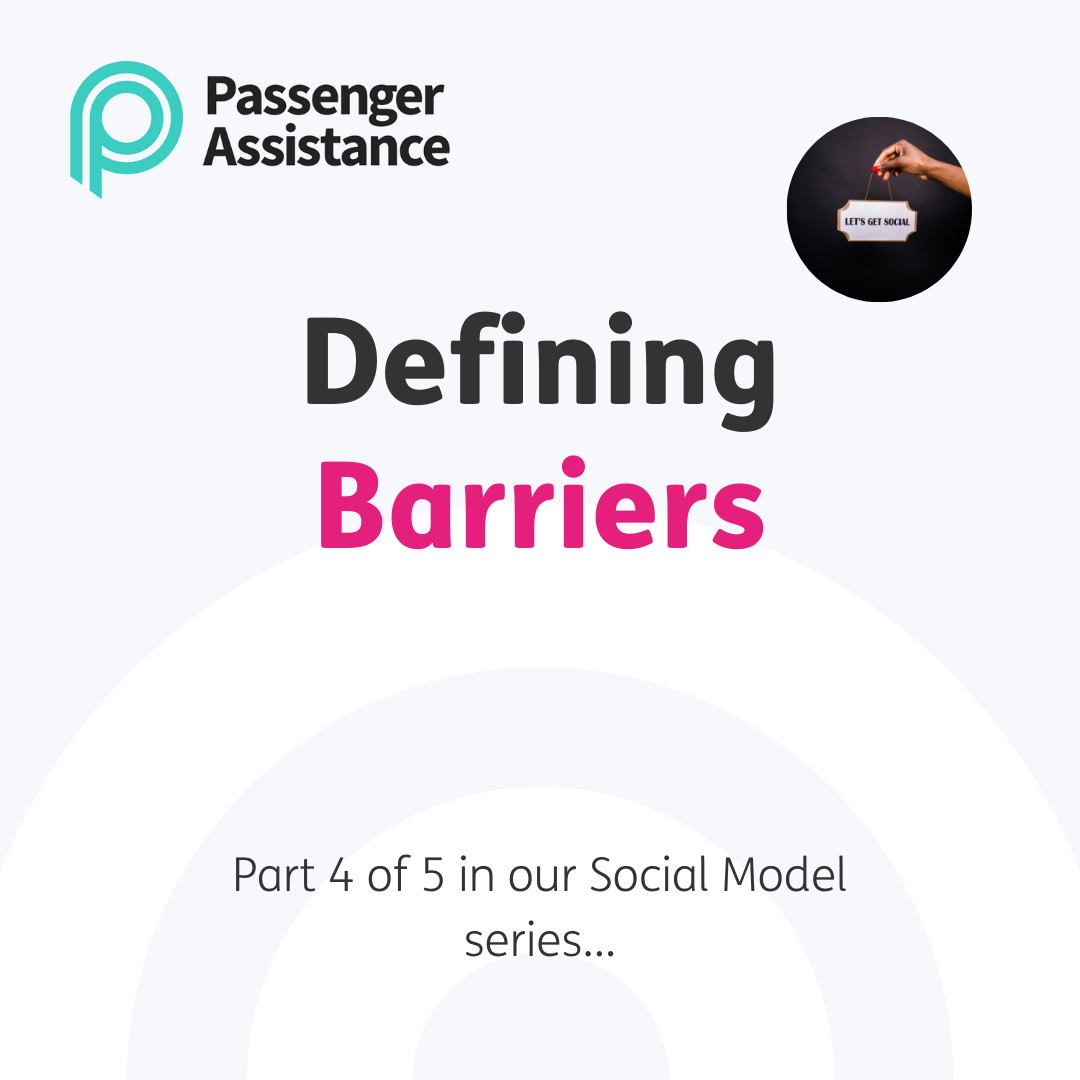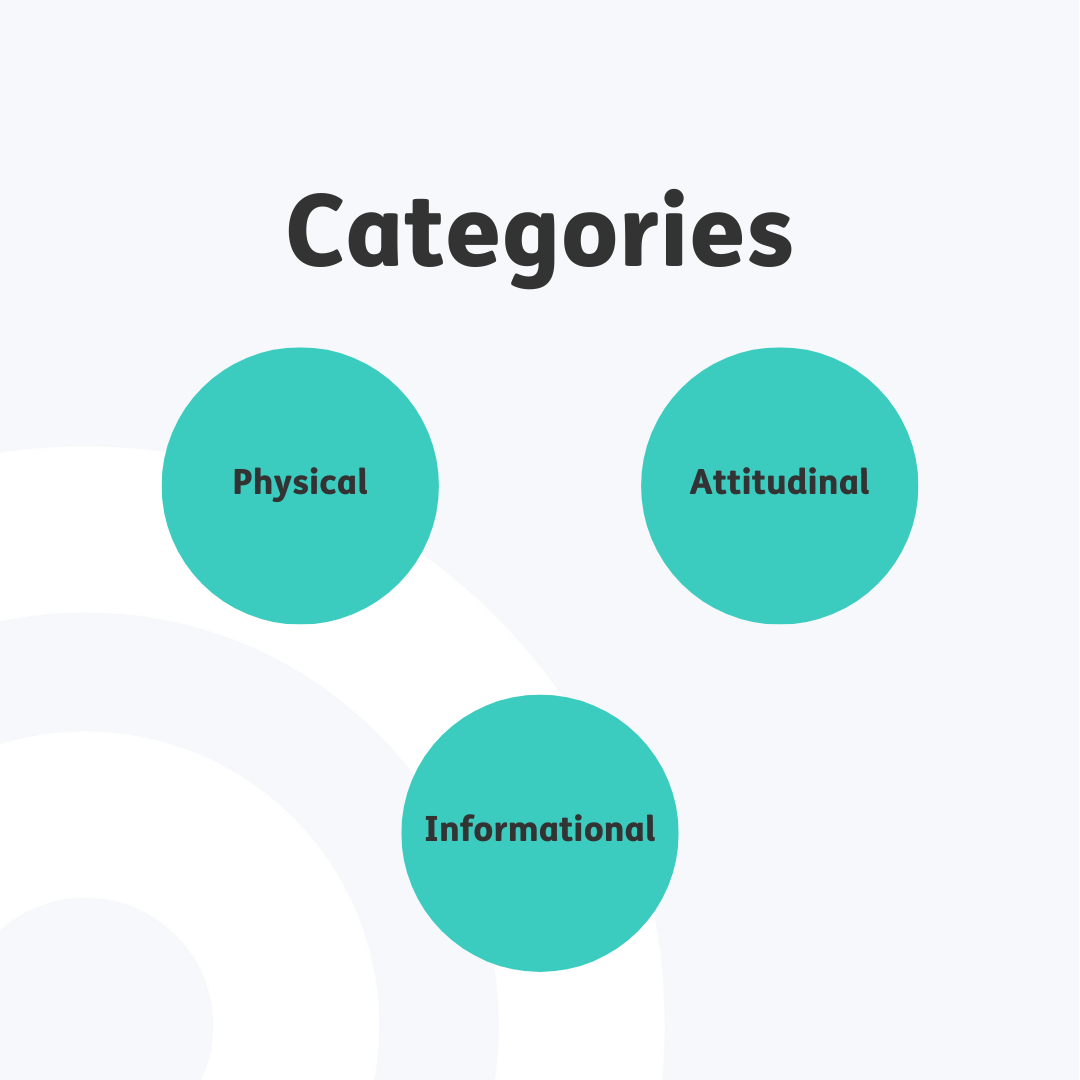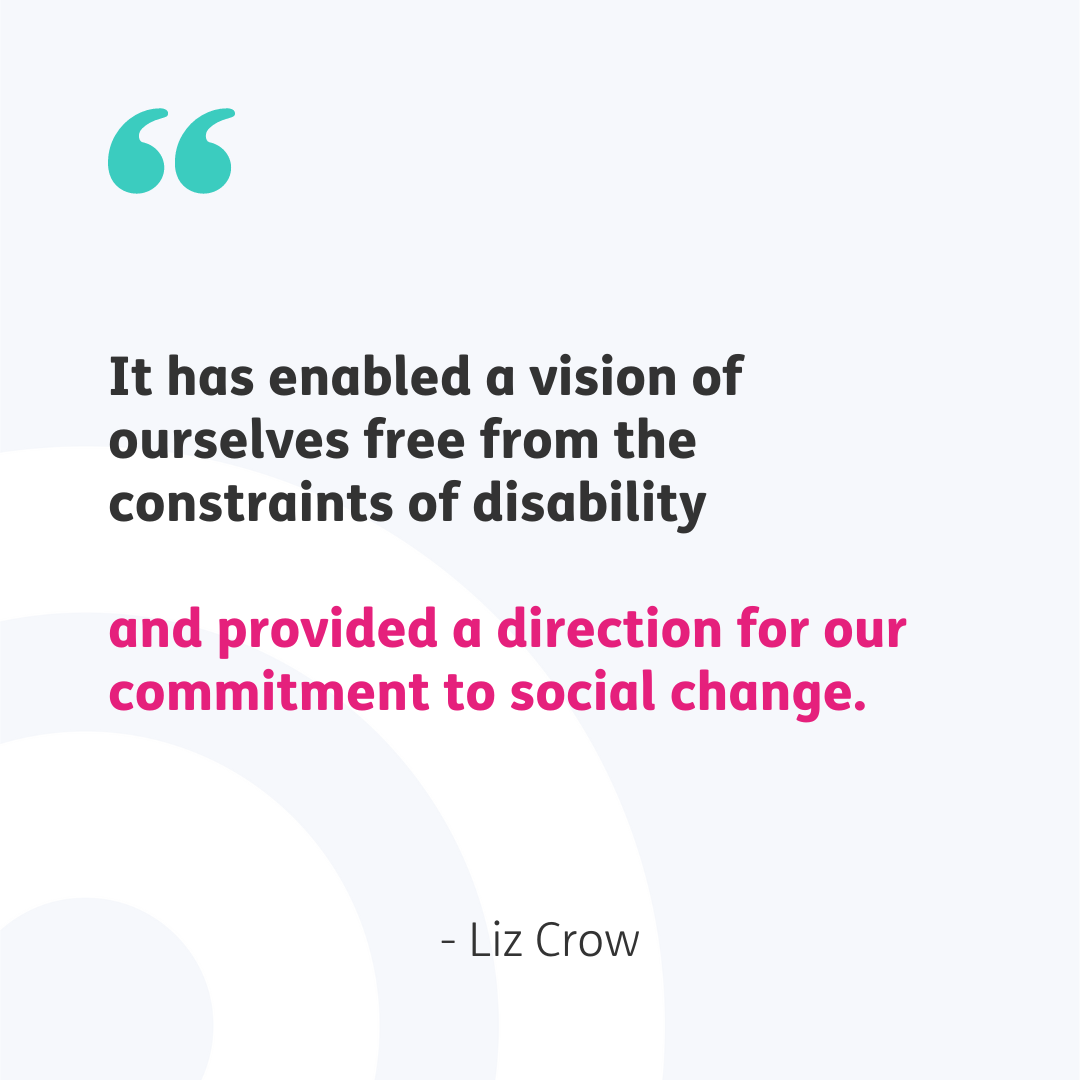Part 4 of 5 in our Social Model of Disability Blog Series…
Click here to jump to Easy Read version.

Definition
The Social Model of Disability outlines that environmental and social barriers have a disabling impact on people with impairments.
These barriers prevent access and perpetuate discrimination and exclusion.
An inclusive society is an accessible society. Dismantling disabling barriers is therefore imperative for social equity.

- Physical barriers relate to the physical environment, e.g. building infrastructure, aisle width, lack of step-free access.
- Attitudinal barriers refer to people’s perceptions of disability and include ableism, both conscious and internalised.
- Informational barriers relate to communication. For example, the absence of a BSL interpreter at an event, or lack of alt text on images.
- These are just three barrier categories – there are many more and they often intersect!
At Transreport
The purpose of our Passenger Assistance technology is to reduce barriers that Disabled and older people face when travelling.
Technology and innovation play an important role in fostering inclusion. Our technology is not a solution for an inaccessible society.
It provides an additional option for communicating access needs, to empower choice and communication.

Easy Read Version






